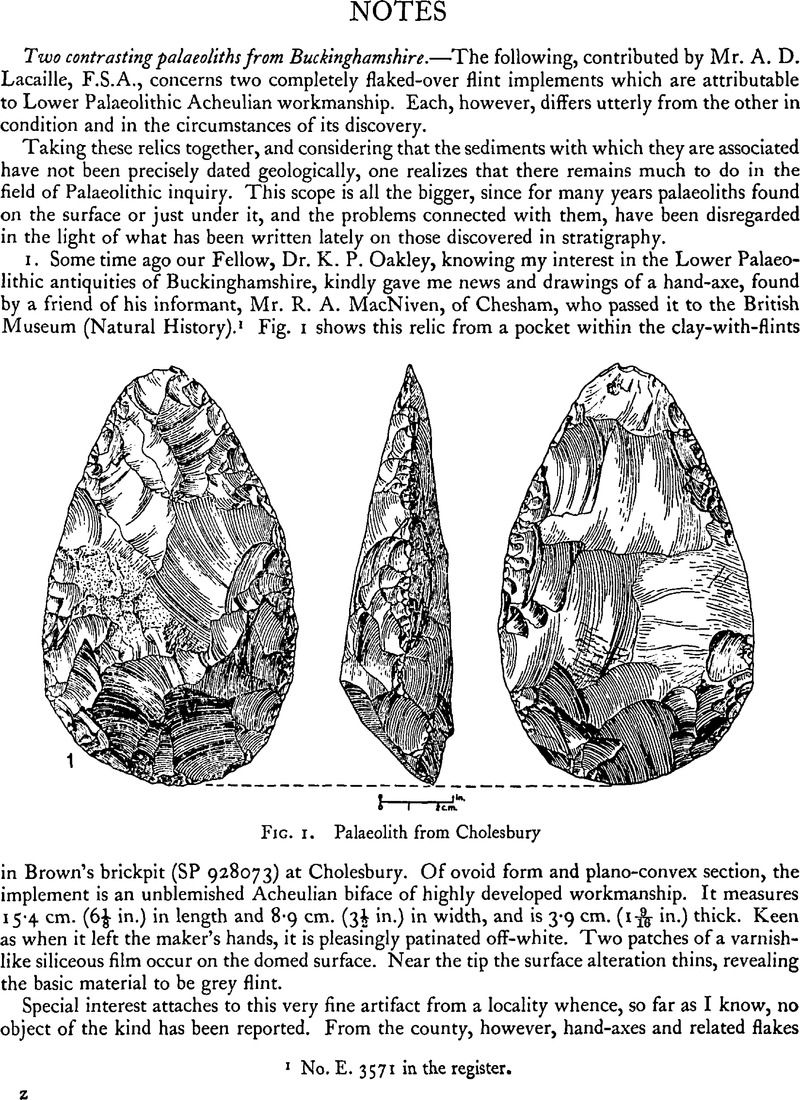No CrossRef data available.
Article contents
Two contrasting palaeoliths from Buckinghamshire
Published online by Cambridge University Press: 29 November 2011
Abstract

- Type
- Notes
- Information
- Copyright
- Copyright © The Society of Antiquaries of London 1966
References
page 333 note 1 No. E. 3571 in the register.
page 334 note 1 Lacaille, A. D., ‘Palaeoliths from Brickearth in South-east Buckinghamshire’, in Records of Bucks xvi, 4 (1959) [274–87], 274–6.Google Scholar
page 334 note 2 Worthington Smith, G., Man the Primeval Savage …, London, 1894,Google Scholar chapters iii–xi, passim; idem, ‘Notes on the Palaeolithic Floor nearCaddington’, in Archaeologia, lxvii (1916), 49–74.Google Scholar
page 334 note 3 Moir, J. Reid, ‘The Silted-up Lake of Hoxne and its Contained Flint Implements’, in Proc. Prehist. Soc. East Anglia, v (1927), 137–65.Google Scholar
page 334 note 4 West, R. G. and McBurney, C. M. B., ‘The Quaternary Deposits at Hoxne, Suffolk, and their Archaeology’, in Proc. Prehist. Soc. xx (1954), 131–54.Google Scholar It was in these deposits at Hoxne that John Frere made his famous discovery in 1797 of the ‘implements and weapons’ he was tempted to refer ‘toa very remote period, indeed, even beyond the present world’. Archaeologia, xiii (1800), 204–5Google Scholar.
page 335 note 1 e.g. SirEvans, John, Ancient Stone Implements, Weapons and Ornaments of Great Britain, 2nd edition, London, 1897, p. 637.Google Scholar
page 335 note 2 ‘The Palaeoliths of Boyn Hill, Maidenhead’, in Antiq. Journ. xli (1961) [154–85], 170–6.Google Scholar




